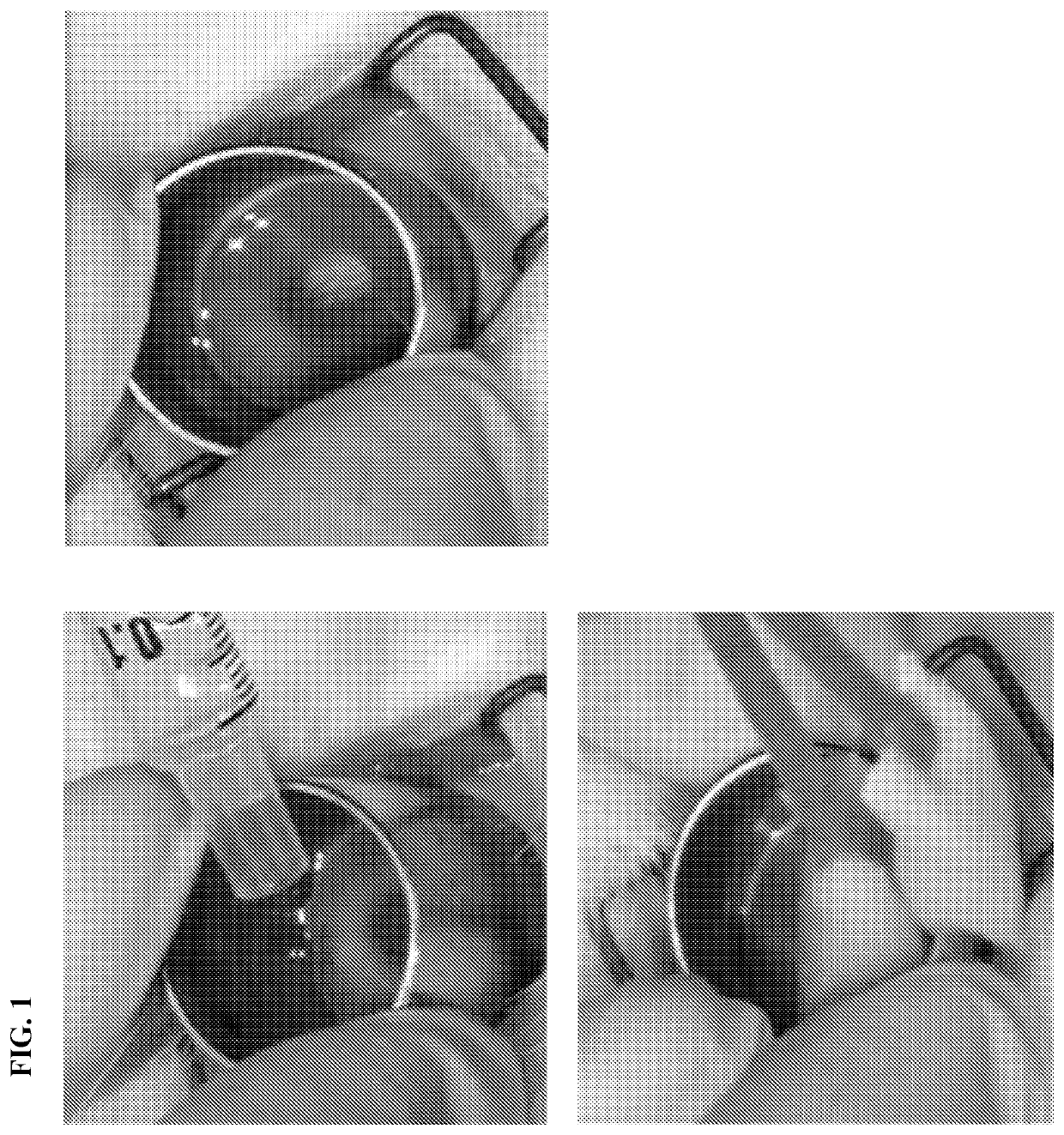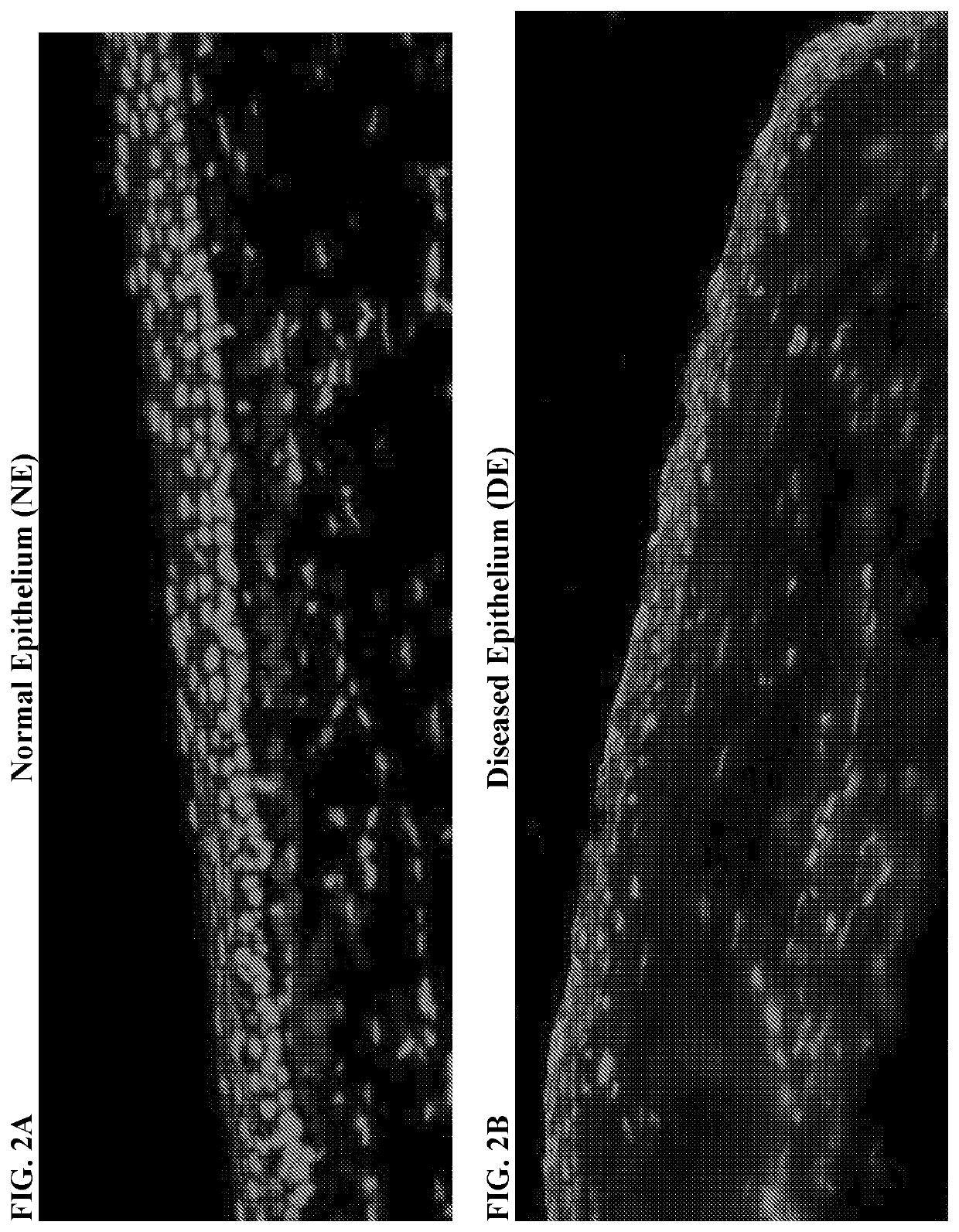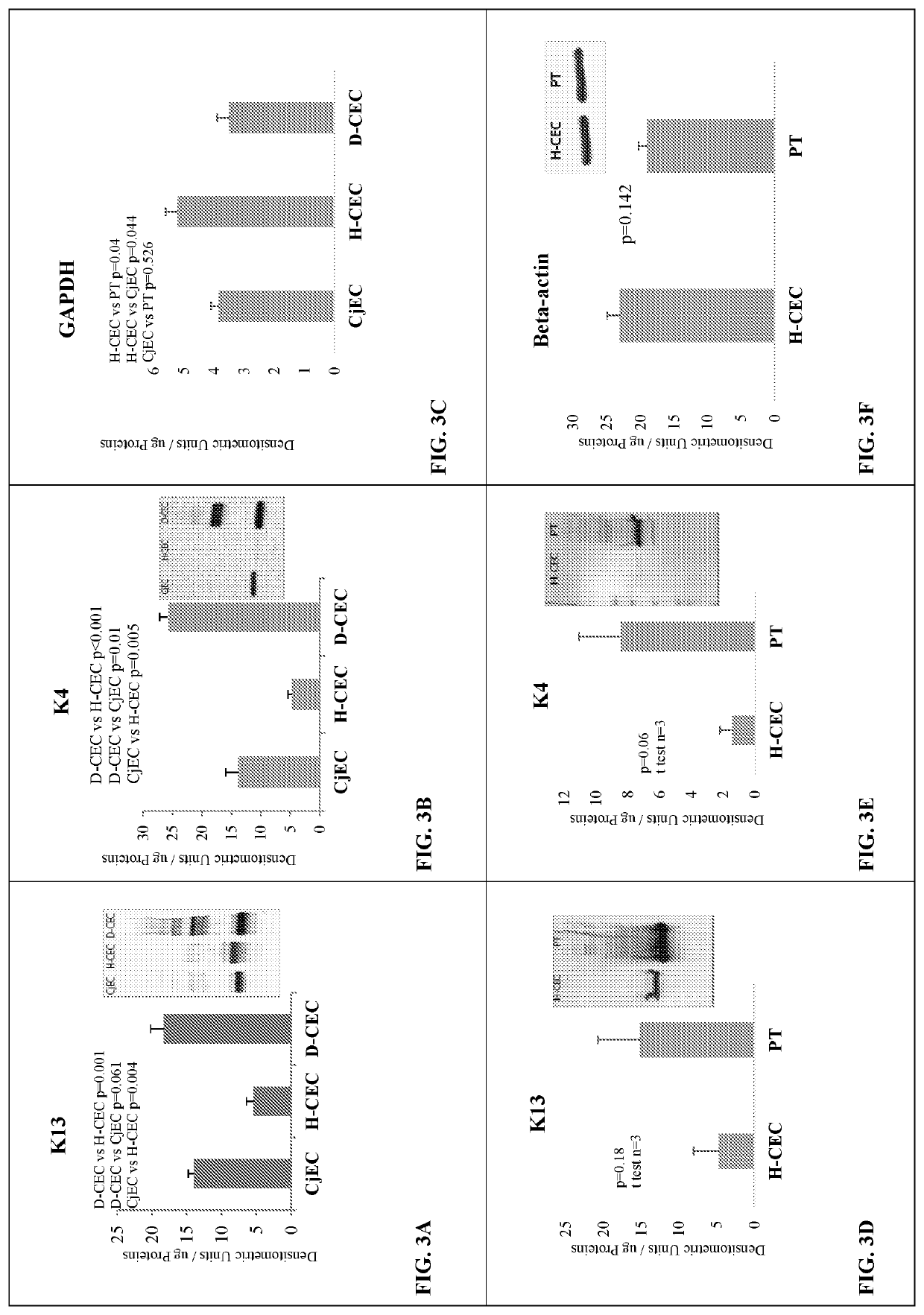Proteasome modulation for treatment of corneal disorders
a technology of proteasomes and corneal disorders, applied in the field of proteasome modulation for the treatment of corneal disorders, can solve the problems of increasing the activity of cpr, and achieve the effects of reducing corneal transparency, increasing globlet cells, and increasing conjunctival proteins
- Summary
- Abstract
- Description
- Claims
- Application Information
AI Technical Summary
Benefits of technology
Problems solved by technology
Method used
Image
Examples
example 1
ced Model of Opacification
[0071]Our model of LSCD-induced opacification achieved total removal of limbal stem cells and obtained stable LSCD. The experimental protocol was performed according to the following schedule: 1) administration of anesthesia, 2) perform lamellar limbectomy to create LSCD, 3) follow up for 3 months until the pathology is stable, 4) administer PS-341 treatment by topical administration (FIG. 1) of the pre-determined optimal dose of PS-341 every 72 hours for one month. Based on our in vitro study, one drop of PS-341 optimal dose was administered every 72 hours for one month. Corneas were routinely examined in the scheduled follow ups. 5) Grading of corneal opacification was performed based on the visibility of the iris details and scored as: Grade 0: clear cornea with visible iris details; Grade 1: mild opacification with less distinct iris details; Grade 2: moderate opacification if the iris is poorly visible; Grade 3: severe opacification if the iris is not ...
example 2
al Cornea is Covered with Keratin 13 and Keratin 4 in a LSCD-Induced Model of Opacification
[0072]Results from histopathological examination of the LSCD-induced opacification model showed that while normal cornea stained K13 positive only on the conjunctival side, K13 markedly covered central cornea of LSCD diseased cornea, as shown by the cytoplasmic cellular staining on the top of the tissue sections in FIGS. 2A and 2B, respectively. K4 was also detected in the conjunctiva-limbal area and central cornea of LSCD diseased cornea (data not shown). In addition, pannus tissue harvested from the LSCD diseased cornea was found positive for K4 (data not shown). The results show that the central cornea is covered with K13 and K4 in corneas from animals with LSCD and not in normal cornea. There was K13 and K4 accumulation with additional higher molecular weight bands in diseased corneal epithelial cells (D-CEC) compared to healthy corneal epithelial cells (H-CEC) indicating K13 and K4 posttr...
example 3
asome Activity is Decreased in LSCD Corneal Epithelium
[0073]Experiments made on collected corneal epithelial cells from LSCD rabbits showed that all CPR activities were significantly decreased in corneal diseased epithelium (DE) (FIG. 4).
PUM
| Property | Measurement | Unit |
|---|---|---|
| diameter | aaaaa | aaaaa |
| diameter | aaaaa | aaaaa |
| diameter | aaaaa | aaaaa |
Abstract
Description
Claims
Application Information
 Login to View More
Login to View More - R&D
- Intellectual Property
- Life Sciences
- Materials
- Tech Scout
- Unparalleled Data Quality
- Higher Quality Content
- 60% Fewer Hallucinations
Browse by: Latest US Patents, China's latest patents, Technical Efficacy Thesaurus, Application Domain, Technology Topic, Popular Technical Reports.
© 2025 PatSnap. All rights reserved.Legal|Privacy policy|Modern Slavery Act Transparency Statement|Sitemap|About US| Contact US: help@patsnap.com



